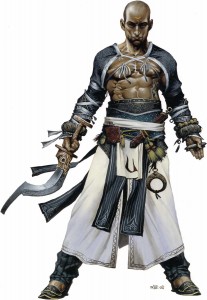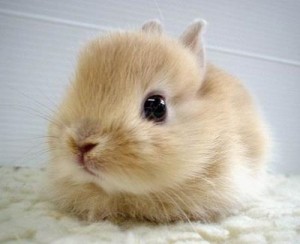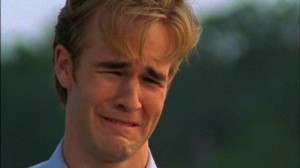Role-playing games, or RPGs for short, are a favorite hobby of mine. As long-time readers of Better Than Sliced Bread are undoubtedly aware of by now, I am quite the avid player of games of elf pretend and a lover of strangely shaped polyhedral solids. However, for all of my love for role-playing games, the culture that surrounds them has a number of aspects that I find problematic. As with most facets of geek culture, role-playing games have for the longest time been a bastion of young males, and while the hobby has become increasingly inclusive in recent years, there are still many facets of it that stink of male privilege, ranging from the slightly innocent boys club mentality all the way to downright hostility towards women. As a straight man who identifies as a feminist in addition to a geek (yeah, we do exist) I find it unwholesome that our hobby still nurtures chauvinistic attitudes and open hostility to women.
In this article I will discuss some of the most prevalent and visible facets of the RPG that betray its chauvinism. There are others, but these are simply the ones that stand out the most. As a little game, if you're into some form of geek culture (whether it's video games or comic books or whatever) but not into RPGs specifically, see how many of these phenomena you can
Cheesecake Art and Double Standards
Art in role-playing games (and especially fantasy RPGs) has always had its share of problematic features, and many people still recall the days when the chainmail bikini was in vogue in the eighties. While the amount of cheesecake in fantasy RPGs is far smaller than in the olden days, the portrayal of female characters in RPG art still leaves a lot to be desired. As an example, here are the iconic characters of Paizo Publishing's hugely popular Pathfinder Role-Playing Game:
While Paizo does deserve credit for equal representation (there being an equal number of female and male characters present, something that is still to this days not a given in the sausagefest that is RPG art), the presentation of the female characters leaves something to be desired: while two out of five of the iconic female characters are fully clothed (I don't count leather armor with a viewing window for breasts as "fully clothed"), even the two fully armored female characters have armor sculpted to accentuate their breasts (which people with any kind of a working knowledge of how medieval armor is actually supposed to work will note is doing it completely wrong). Secondly, the amount of skin in view as well as the poses which accentuate the amount of breasts and midriff on display makes one wonder whose viewing pleasure the artist had in mind while creating these characters.
If it feels like I'm unfairly picking on Paizo, their main competitor Wizards of the Coast isn't always much better, as testified by this cover of a Dungeons & Dragons comic, created with Wizards' licence by IDW Publishing:
I'm going to be frank with you guys: I love the hell out of this comic for its amazing writing and lovable characters, but in spite of that I cringe at this marriage of fantasy RPG art and comic book female stereotypes. Like comic book art, RPG artwork exists on a plane were all the women are size zero models with perfectly sculpted spherical breasts and always willing to show them off. (Incidentally, both of the pieces of art on display here are by Wayne Reynolds, a man whose love of anatomically unlikely people makes him something of a Rob Liefeld of RPG art.)
The fact is, when women are to be seen in RPGs, they are to be seen as pinup models. In most RPGs male characters are given greater leeway in terms of body shape and general attractiveness, but the female characters portrayed are often of the lithe and busty variety. The general line of argument goes that these images are there to titillate viewers of both genders: men get to look at elven megababes, while women get to look at the oiled up torsos of muscled men.
There are two problems with that line of argument: first of all, as mentioned before, men in fantasy RPG art demonstrate a much wider range of body types and appearances, all the way from fat to skinny and from statuesque to homely. Women, on the other hand, are almost without fail portrayed as lingerie models with unlikely proportions. Second of all, the muscular, oiled up man is nothing but a male power fantasy in the same way as the skimpy sorceress with a dress that according to the laws of gravity should have no business staying on is a male sexual fantasy. The audience of these images is, for the large part, men.
It's not just the art that deserves a mention, as the double standard for female and male standards of appearance also exists in writing, as demonstrated aptly by this discussion on RPG.net. To give you the long and short of it: someone noticed, that in an RPG sourcebook many of the female characters were described with words such as "beautiful," "lithe" and "petite," but with nothing beyond that, while the men were not only described by using a greater variety of descriptive words, they also demonstrated a much wider range of varying body types and appearances. A fair warning: the above thread contains a lot of apologia for these differing standards, including the amazingly horrible idea of "Well, my male friends want me to populate my elfgame worlds with lots of beautiful girls their characters can date."
And since we're on the subject of apologia...
Rape Apologism
Since their early inception, rape has had an unfortunate presence in role-playing game writing. Most of the time it sneaks in as a casual mention, i.e. in the sense where older editions of Dungeons & Dragons described the race of half-orcs as being mostly a product of rape, while in others it takes an unfortunate center stage. Obviously, when the subject matter goes overboard, such as in the widely vilified and terrible role-playing game F.A.T.A.L. (If you must know, save yourself the trouble of actually looking for the game and just read this hilarious review of it.), people do speak out against it. Unfortunately, games like F.A.T.A.L. which feature sexual assault front and center are only the tip of the iceberg: casual treatment of an extremely difficult and painful subject matter in ways that don't give it the gravity it needs is all too common in role-playing game writing.
That said, many RPG writers are convinced of the fact that adding the r-word into your game is a sure-fire way to make it more mature. The most prevalent example of this from past years is the cosmic horror/giant robot RPG CthulhuTech, whose writers seem to have an unfortunate habit of equating horror with "let's add rape in there somewhere." Paizo Publishing also has something to answer to with their Kingmaker adventure path for their Pathfinder RPG, which features varying degrees of sexual assault in a number of bios for the characters relevant to the adventure path. The addition of a casual mention rape into the background of a non-player character (something which players might actually never discover) is tactless at best, and Paizo's writers and editors have defended its inclusion due to the adventure path being inspired by George R.R. Martin's A Song of Ice and Fire. 'Cause, you know, rape was clearly the one thing you couldn't do without if you wanted to make something in that vein.
Probably the most widely publicized example of rape apologia in RPG circles was James Desborough's coming out in defense of rape as a plot element. His writing was widely criticized in light of his past writings, some of which featured ironic and humorous sexism, and when a female gamer dared to suggest a boycott of the company that Desborough was currently working for due to his less than charitable attitudes towards women, said woman received threats of rape.
"What About The Men?!"
A common trend in all facets of geek culture, concern-trolling is when some facet of a hobby is called out as being sexist or hostile towards women, the inevitable response is for someone to respond with some variation of "Well, if you find RPG culture sexist, maybe it's you who is the real sexist!"
For an example: person A thinks that the portrayal of women in RPG art objectifies them. Person B sees nothing wrong with the portrayal of women in RPG art and doesn't consider themselves sexist. Therefore, in person B's mind, person A must be the real sexist.
Mansplaining and concern-trolling do take other forms: owing to the victim complexes and jocks vs. nerds mentality that many male geeks construct their identities around, the very fact that something geeky is called out as problematic often leads to it being perceived as an attack on the thing that they love. If someone were to, for an example, suggest that, hey, Pathfinder is a great game but it could do with some greater variation in female images and a bit fewer casual mentions of rape, one of the inevitable reactions would be "Why do you hate Pathfinder?!" This defensiveness about the games that we RPG geeks hold dear not only makes it hard to perceive flaws (and unfortunate and problematic subject matter) in our favorite games, but also leads to a sentiment of anti-feminism in the culture. In this view, feminists within the hobby aren't out to make the hobby more inclusive and less alienating for a greater number of people, they're out to destroy the hobby the boys love and burn all the games they play!
In conclusion? Guys, admitting that there are problematic elements in our hobby isn't going to destroy our hobby. If anything, owning up to the fact instead of burying our heads in sand is going to open up the way towards making our hobby more inclusive and thus attract a larger crowd. If we stick to the "boys only club" mentality of yesteryear, our hobby is going to alienate a good 50% of the population in total. If anything, our hobby could use more people, and if greater inclusion within the hobby drives away a few toxic elements, all the better.
![Dungeons-and-Dragons-1-Cover-B-2010[1]](http://static1.squarespace.com/static/59b127f2f9a61e09f11d37d0/59b51d9ccd84a5583366ae8e/59b51eb0cd84a5583366c9b4/1505042096735/Dungeons-and-Dragons-1-Cover-B-20101-197x300.jpg?format=original)


